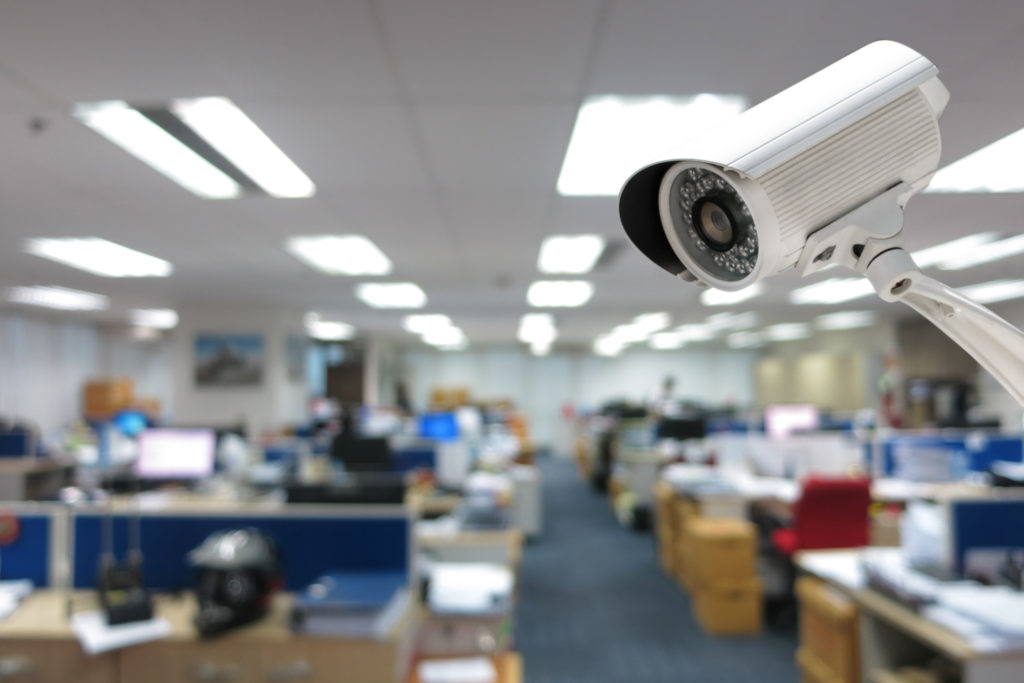Basic Tips for Outdoor Wireless Surveillance Installation
September 26, 2012 in Wireless Surveillance
Regardless if you are using analog, digital or IP-based technology, there are some basic tips to help ensure successful outdoor wireless installations.
Survey the Site
Before you begin any sort of installation, you need to walk and analyze your job site. Take note of existing buildings and any potential new construction that may be underway. Note the height of the locations where you plan to put your transmitter and your receiver. Keep an eye out for electrical outlets that are nearby, which may come in handy later.
If you plan to put devices on light poles, investigate if the power is constant or on a timer or sensor of some kind. Can you pull a 120v leg from that pole? Do you have the right mounting equipment to put a device on a pole? Can you drill into the pole, or do you have to use straps of some kind?
If you’re going to put the devices on a building, note where your points of entry for your cables might be (the cables will probably need to get routed indoors at some point. Does the building have a stone front? Eaves? Does one side of the building receive more direct rain than the other sides?)
Also note your cable routes. Depending on if you are using an analog transmitter or an IP-based transmitter, you may be pulling low voltage cables or Cat-5. Low voltage cables should be kept under 100 feet if possible. Cat-5 has a theoretical limit of 324 feet.
If you are using an external antenna, plan to keep the cable between the transmitter and antenna as short as possible (less than 5 feet if you can). Antenna coax cable is expensive and also adds signal loss to your system. It is better to extend the power wires than it is to extend the antenna coax.
Confirm Line of Sight
Line of site comprises of two parts, visual line of sight and RF line of sight.
Visual line of sight: It sounds very simple, but you would be surprised how often this is overlooked. Visual line of sight means you can tie a string from one antenna to another antenna with no bends or obstructions in the way. It’s like a laser beam.
Keep in mind if there is any construction underway or planned in the area. There have been situations where a perfectly functional wireless installation was disrupted by an unknown construction project in between the transmitter and receiver. Also be aware of any trees in between the transmitter and receiver. There have been several situations where there has been a successful connection in the fall, but in the spring when the trees bloom, the leaves block out the wireless signal.
Also be aware of any trees in between the transmitter and receiver. There have been several situations where there has been a successful connection in the fall, but in the spring when the trees bloom, the leaves block out the wireless signal.
RF line of Sight
RF line of sight takes several factors into account. Most importantly is an effect known as the Fresnel Zone.

The Fresnel Zone is like a wave in the ocean: An RF signal has a top and a bottom to and, it’s not enough for you to JUST clear the top of an obstruction; you must have enough clearance for the top and the bottom of the signal. The Fresnel Zone is calculated based on the frequency of the transmitter and the distance you are sending.
| 0.5 miles @ 2.4GHz | = | 16.5 ft |
| 1.0 miles @ 2.4GHz | = | 24 ft |
| 0.5 miles @ 5.8GHz | = | 10.5 ft |
| 1.0 miles @ 5.8GHz | = | 15 ft |
As you can see, the higher frequencies have a smaller Fresnel Zone. However, 5.8GHz isn’t as widely used, so if you’re looking for a system to interact with existing wireless equipment, it might not be the best choice.
The other factor in RF line of sight is antenna selection. Antenna selection can play a huge role in the success or failure of a wireless installation. There are three main types:
- Omni
- Patch (or a variant known as a sector)
- Yagi or parabolic grid
An omni-antenna broadcasts the signal like a doughnut. It sends signals out 360 degrees, but very little up and down signals (typically between 5 and 10 degrees). So, if your sending and receiving locations are not the same height, it’s possible that the signal may shoot over the top of it.
A patch antenna is like cupping your hands around your mouth. It focuses the signal into a tighter pattern. (Approximately 40 degrees vertically and 40 degrees horizontally). It is a better choice when you have buildings that are different heights. It also higher gain than an Omni. A sector antenna is a patch with a wider spread (normally between 90 and 120 degrees horizontally).
A parabolic grid antenna is like a bullhorn. It is very high gain but has an extremely small signal pattern (usually less than 10 degrees horizontally and less than 5 degrees vertically). It is used for extremely long distances to help overcome the Fresnel Zone effect, as well as to block out other interference.
Physical Installation
- Mount the antennas on a high point where they have clear visual and RF line of sight to the next link, and keep your equipment as close to the antennas as you can.
- Run the cables where they won’t interfere with anything else in the building and where they can safely penetrate to the inside. Try to keep them away from high voltage AC, which can induce signal interference. Before going into the structure, create a ‘drip loop’ by twisting the cable into a circle, about 8 inches in diameter. This will encourage any rain to run to the bottom and drop off, rather than flowing into the hole you’re about to make. Be sure to consider grounding and/or surge protection for your wireless equipment if you’re in a poor weather location.
- Secure any wires or cables so they aren’t disturbed by the weather and protected if possible, and wrap any exposed connections in sealing tape or caulk to resist corrosion.
- Plug any PoE or other power supplies into a good surge protector. Note: A surge protector is not a lightning protector; it’s just going to help defend against power surges from the electrical line, not a lightning strike.
- If you have good line of sight but are still having problems connecting, consider changing the channels of your wireless transmitter. Try raising or moving the antennas, because you may have an unexpected reflection off of an obstruction.
If you have any questions about outdoor wireless security installations or would like help choosing the right solution for your surveillance application, please feel free to contact us.




About The Author: Supercircuits Team
More posts by Supercircuits Team